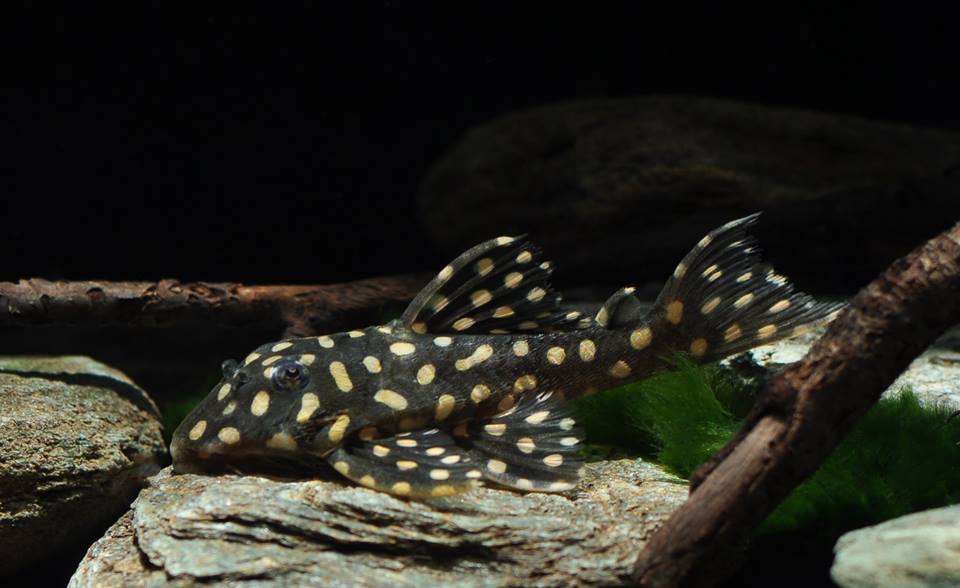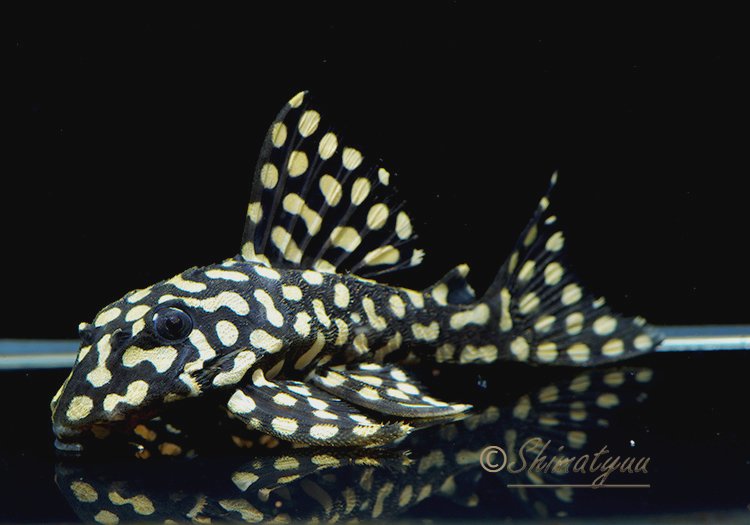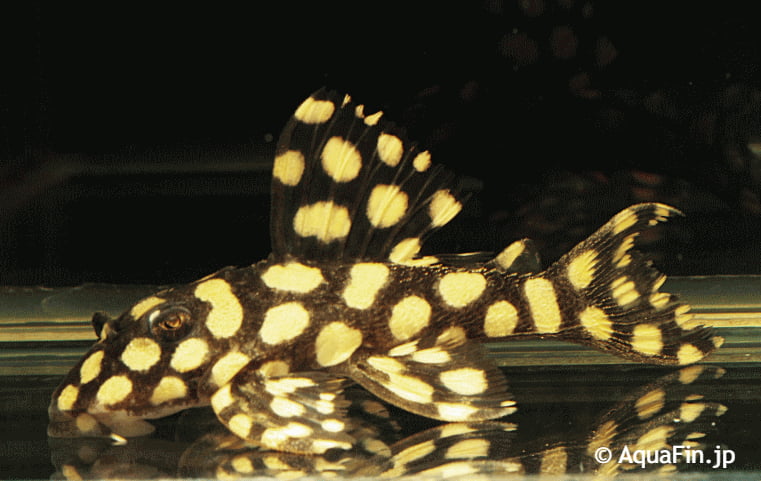







Surely the Hypancistrus species from Brazil’s Rio Xingu can be confusing and hard to identify, but that can also be said for the spotted Hypancistrus forms from Orinoco and its tributaries in Colombia and Venezuela. H.contradens is exported from Colombia together with other similar representatives of the genus, so it’s usually up to the fishkeepers to pick out the correct individuals from the mix that arrives at their retailer. H.contradens is a beautiful fish; pitch black with large white spots which makes them very popular. Some juveniles appear as extremely beautiful, natural morphs with very large white spots. These will diminish in size as the fish grows.
Facts:
Name: Hypancistrus contradens (Armbruster, Lujan & Taphorn, 2007)
Trade names: “L201a”
Origin: Rio Ventuari, Rio Sinaruco, Venezuela
Maximum size: 14 cm / 6”
Contrary to the beliefs of many, H.contradens has no L-number, although it’s sometimes traded as “L201a”. This is not a guilty / official L-number. It’s very often confused with L201, which it’s also exported together with, and L471. Compared to L201 H.contradens grows bigger, has a higher more bulky body, and usually bigger spots. L471 is a number often used for exporting H.contradens nowadays, purely for commercial purposes – it’s easier to sell a Pleco with an L-number. L471 is a number given by Daniel Konn-Vetterlein and myself to a fish growing to only 6-7 cm, which otherwise resembles H.contradens superficially.
L102, H.inspector from Rio Negro, Brazil is also often confused with H.contradens, but can easily be told apart by its black rim in the fins.
They need an aquarium set up consisting of lots of hiding places in the form of rocks, wood and of course specially made caves that suit their measurements. In these the males will eventually guard their offspring. They prefer water that is warm (27-30 C), soft and slightly acidic. Most of all it should be well oxygenated and clean, so a good filtration system and frequent water changes are essential. Among themselves they are peaceful, although males may quarrel for caves and females can sometimes be badly injured or even killed during the breeding-trapping in the male’s cave. Males develop longer odontodes on their pectoral fins and on their cheeks and have broader heads. Hypancistrus are mostly carnivorous, so a selection of crustaceans, insect larvae and fish meat should be offered along with high quality dried foods that also contain some vegetable matter.
More info:
